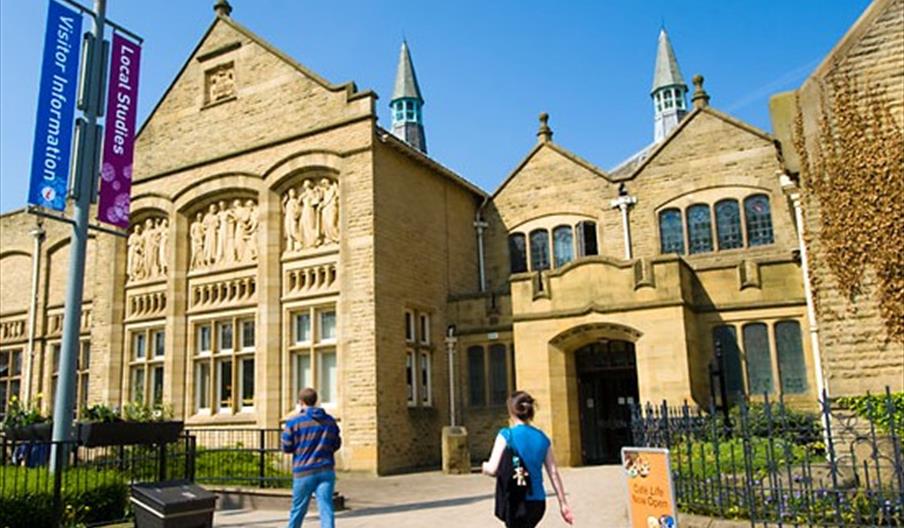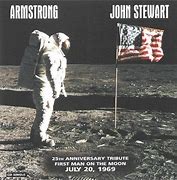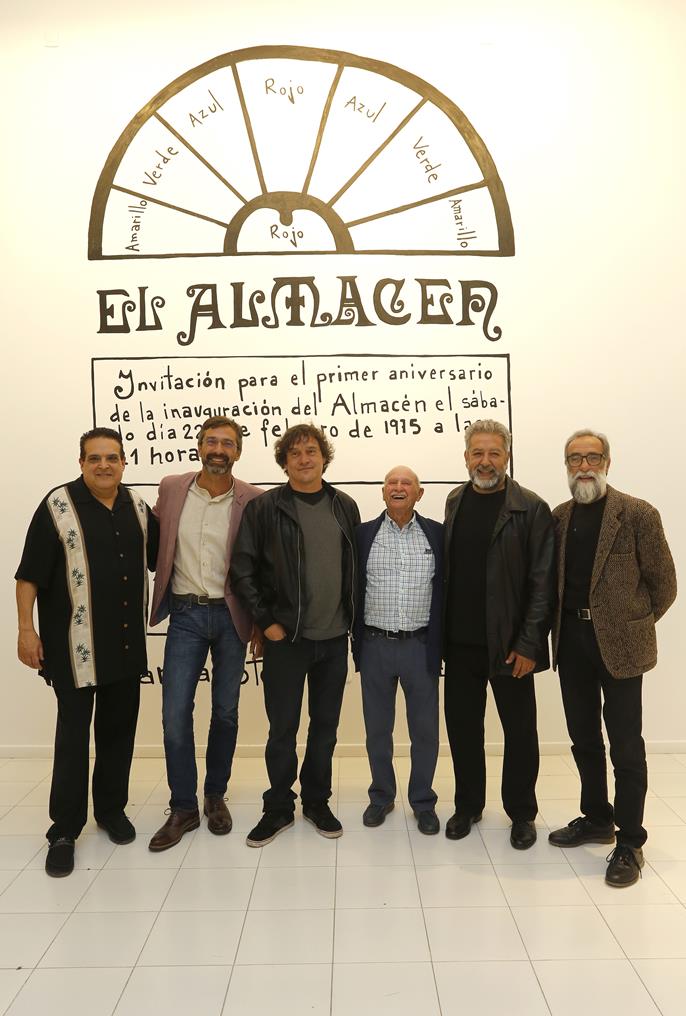ARTISTS & CURATORS, GALLERIES & GUIDES
ARTISTS & CURATORS, GALLERIES & GUIDES
Entre Islas by Ildefonso Aguilar – CIC El Almacen
Curated by Estefania Camejo
Review by Norman Warwick

I was privileged to work with a number of enthusiastic and excellent arts curators during my life in the UK, at galleries such as Touchstones in Rochdale, the Lowry in Salford and many others around the North West of England.
Now, living here on Lanzarote, I have met another freelance curator who is both reactive and proactive with the work of the artists she represents. These artists must treasure her for the research and energy she brings to their collections and gallery proprietors must massively value the extra yards she puts into attract new and non-traditional audiences to their exhibitions.

Entre Islas was a collection of fairly recent work by Ildefonso Aguilar (right) one of the most renowned contemporary artists on the Canary Islands. That it had been curated for showing by Estafania Camejo, for the Cic El Almacen gallery in the centre of Arrecife provided a wonderful opportunity for residents and tourists to take their time in seeing this island in a new light, as has projected the island through a metaphysical outlook on its landscape, albeit it transposed to an imaginary island resting somewhere between Lanzarote and Iceland.
This is another page in a long chapter about the relationship between Canarian artists and the island horizons that surround them. The works produced here have been described as ´a spotless and magnificent visual and artistic example (of his contemporaneity).´ He uses his technical skills to create what he sees in his mind, using the very textures of the dust of the earth, with smooth lighting so that they visually re-enact the soundscape he picks up in field recordings.
´Because of this, wind, water, earth and light make up a soundtrack where the profile, silhouette, abyss and plain of a raw, primitive nature are on show.´
´This is more than mere pictorial of beauty, but is rather, with its earthy strength, a collection of works revealing an overwhelming geological awareness. We are captivated, almost overcome, by its vastness and its vision leaving us where time stands still, before fading beyond and out of our sight as we listen to the sounds of eternity.´
If all that sounds fanciful, visitors to this exhibition almost certainly experienced that emotion for yourself.

We felt all that and more, when we followed Estafania Comojo around on a guided walk of another exhibition, of rarely shown art works in The Cabildo, and although I don´t understand Spanish her passion was easily translated. Such guided walks can often, in the UK anyway, be quite formal and slightly academic, and spoken in rarefied language of arts expertise. Not so with this curator, who wears her vast knowledge lightly, and beautifully contextualises all her arguments and sense of wonderment.
One of the joys of watching TV programmes like The Antiques Road Show is the way their expert presenters leave us feeling like experts at the end of a presentation after they have shared with him us their wonder at so many artefacts. If ever Lanzarote TV or whatever is the national channel of Spanish TV wants to commission such a programme on the arts they should recruit Estefania to present it. She is clever and amusing and very photogenic and television audiences would love her.
When we recently joined her again on a guided walk of the Entre Islas exhibition she had curated at Cic El Almacen, she delivered her talk in Spanish, as Dee and I were the only two English speakers in the party of a dozen or so who followed the tour.
The first impression these works release to a cursory glance around the walls, as she begins her talk, is how dark and sombre and seemingly introspective they are. They are created on huge, frameless and imposing canvasses but Estefania´s eye for detail soon points to the uniqueness of technique and to how minutely, and accurately, the works seem to interpret the landscape from which they grow..
She talks of the ´fissures´ and cracks shown on the landscapes and tells us something of the artist´s technique in creating these strange and challenging works. After then giving us all some free time to wander round this opening room, and to look at the fifteen to twenty pieces on display there she invites us to re-join her and follow her, ´down into the cave.´

I was reminded of a lyric by the late American songwriter, John Stewart, as we descended through the darkness.
´And the world all stopped to watch it, on that July afternoon;
to watch a man named Armstrong walk upon the moon.´
As we each stepped off the bottom rung of a staircase that was not unlike a ladder running down the fuselage of a spacecraft, we stepped down into a floor covered in the picon that is all over the land here on Lanzarote. The circular walls of ´the cave´ held images of Lanzarote that perfectly illustrated why it is so often described as a lunar landscape. The texture made strange, squelchy sounds as we set foot on it, a sound Estefania would later expand on when we spoke to her after the walk was over. For now though I found myself muttering Neil Armstrong´s immortalised line of ´one small step for Man, one giant leap for Mankind´ though he later always claimed he had said ´one small step for a man,…etc.´ which most philosophers seem to think would have made more sense!
This cave somehow captured all that, and also moaned and groaned with the amplified sounds of the land, first recorded more than fifty years ago on what was then state of the art sound recording equipment. Estafania explained all this, reminding us that not only was the artist far ahead of his time all those years ago, but that this was evidenced by how contemporary his current work remains.
She then lapsed into silence for a few minutes after introducing us to a silent film showing how the artist actually creates these masterpieces, using ´found´ elements of the land, in this instance including the white sands from Caleton Blanco, and employing liquid, mops, brushes, hands and fingernails to make corporeal his vision.
One of the many joys of Estefania´s guided walks is how quickly they become a dialogue rather than a presentation. She welcomes interjections from her ´audience´ and then engages easily in conversation, seemingly valuing our arguments as much as her own. There are always smiles and moments of laughter and those who have ever accompanied her on such walks must surely return to galleries in future with the confidence to more fully engage with any art work on display.
As she had brought this walk to a close and people thanked her, profusely, and start to drift away, any initial doubts I had about the apparent bleakness of these works had been blown away by Estefania´s overall enthusiasm and her attention to detail. Her generosity of spirit was applied to everyone. She had extolled the virtue of the artist and in a brief conversation we had with her afterwards she had told us of the expertise and writing skills of Jose Ramon (Pepe) Betencort who had written an eloquent introduction to this exhibition, which Estafania has utilised in the display, and which I have borrowed extensively from for this article.
Whilst it is very much the art of the island we have viewed so far in her collections, Estefania is in a fact very much a young woman of the world, who has recently stayed in New York (on ´holiday´) and visited that city´s three major galleries, each of which she assessed for us very succinctly. Suffice to say she loved the Guggenheim.

Cic El Almacen, Arrecife, Lanzarote
As we discussed this current collection here at El Almacen, I mentioned that the film of Ildefonso Aguilar at work on a major piece had seemed, to my inexpert eye, to be of a man going through what seemed a fairly arbitrary process, and so I wondered if he could have possibly known how the final work might look.
Estafania suggested that only by creating and retaining a very clear image in his mind of what he wanted to produce could each piece in this collection have been so obviously a part of his thematic-
I remarked that I thought her admiration for the artist had clearly shone through her talk tonight, and suddenly she set off talking again, with great enthusiasm about how, when Aguilar first emerged as an artist several decades ago, his work was so far ahead of its time. When I asked her to elucidate on that she reminded me that his use of sound and sediment reflected a multi-disciplinary approach.
I had heard her comment before on cross-disciplinary work like this, and I asked her if she is an advocate of that kind of artistic attitude. She replied animatedly that there are so many new approaches being made available to artists by technological advancements that not only facilitate creativity but also collaboration, and she believes that artists should take every advantage they can of these opportunities.
When Estafania turned the tables on me, and started asking me questions about whether and why I had enjoyed the exhibition, I said that I was very impressed by how, despite being sombre in tone, these works, the artist had created were of ´beauty out of darkness and music out of noise.´
That was quite pithy I hoped, and was perhaps a quote she could work with but it is part of her love of art to defend it against the merest suggestion of slight, and so she reminded me the earth does not make noise, but makes sounds, from which music can be created. A fair point well made.
To try to save face and leave with some dignity intact I made the final point that I have heard the world ´island´ used so many times in talks about Lanzarote artists, that I was beginning to wonder whether the shores of this small island might be somewhat limiting.
Estefania reminded me, once again rightly, that the island may be small but the seas beyond those shores are enormous. She was suggesting, I think, that great artists are not constrained by their horizons.
It was time to leave, for Eduardo, nephew of Cesar Manrique, was waiting to speak to her. As on the previous occasion I had spoken with her she had given me much to think about and I hope we meet again at forthcoming exhibitions, so that I can keep up to date with the long and successful career I am sure this young ´freelance curator´ will enjoy.
Since this report was written, of course, Covid19 has been but not yet completely gone, and even though some arts venues on Lanzarote are now re-opening it is too early to say when some new paradigm of Estefania´s walks and talks can be re-established. Meanwhile she is busy undertaking her own studies and will, no doubt have been involved of the uploading to on-line the archives of exhibitions such as this. As the galleries do open their doors again, though, they and their artists and people like Estefania are deserving of our support.




Leave a Reply
Want to join the discussion?Feel free to contribute!